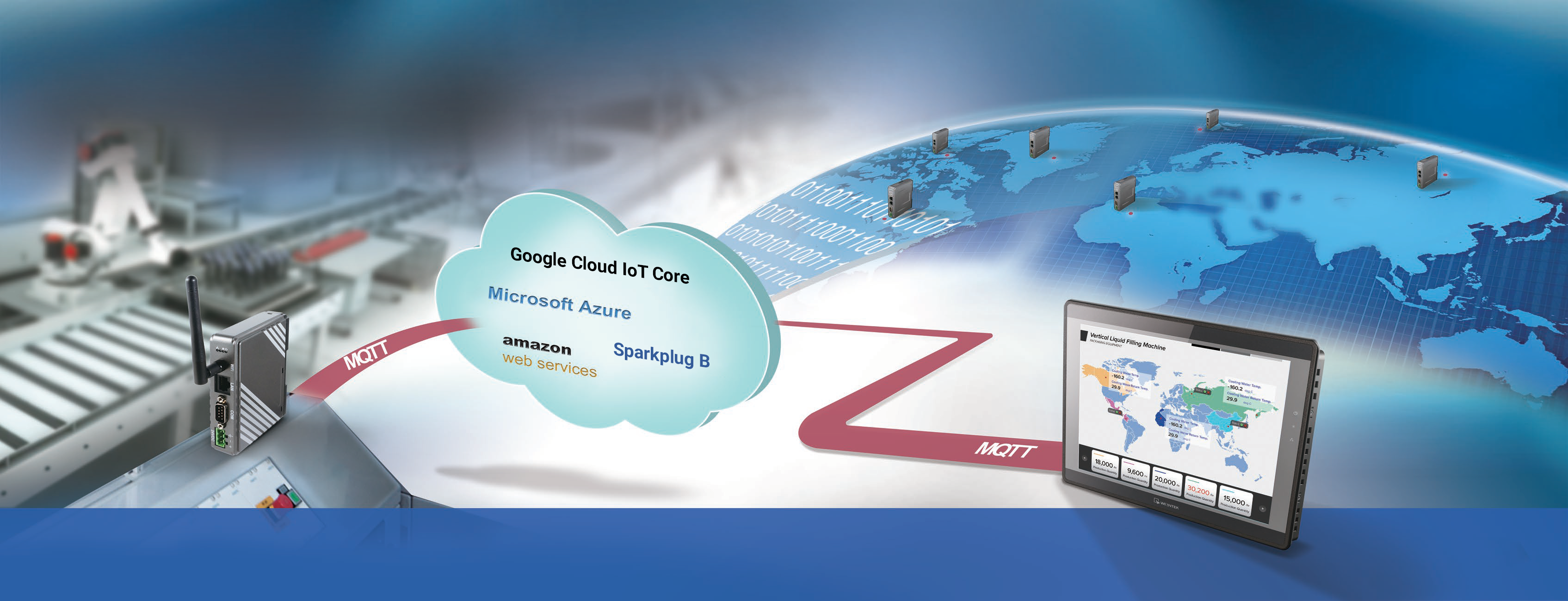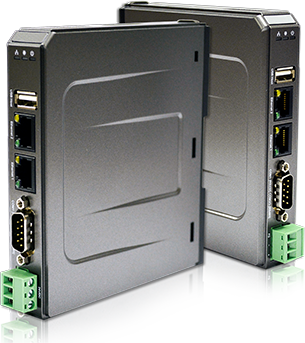Related Links
Software
Manuals & Guides
- EBPro Quick Start Guide
- EBPro Programming Manual
- cMT Quick Start Guide
- cMT-SVR Installation Manual
- MQTT User Manual
Tech Notes
Videos
- Product Overview
- Quick Start: Part 1 - Introduction and Installation
- Quick Start: Part 2 - Create a Project
- Quick Start: Part 3 - Creating Windows
- Quick Start: Part 4 - Creating Static Elements
- Quick Start: Part 5 - Creating Digital Objects
- Quick Start: Part 6 - Create and Group Analog Objects
- Quick Start: Part 7 - Simulation Mode
- Smart HMI Introduction
Sample Projects
Controller Information Sheets
See Our List of
Controller Information Sheets
Communication Cable
See Our List of
Communication Cables
⇐ Back to IIoT Solutions
Unifying IT & OT with a HMI or Headless HMI
Before deploying new technologies and rolling out new infrastructure, IT Admins need assurances. Their jobs depend on their ability to monitor networks and scale out infrastructure. They also need to know that data moving through the network is secure, and that it can be backed up adequately in the case of an outage or equipment failure.

Put your mind at ease. The Maple Solution with MQTT on one of our
HMIs or headless HMIs checksall the boxes:
SECURITY:
- Traffic sent between Edge Nodes, MQTT Brokers, SCADA systems, and the Cloud can all be encrypted using Transport Layer Security (TLS 1.2) and device certificates.
- The Publish/Subscribe model of MQTT means that no additional security compromises need to be made as far as opening network ports or allowing incoming connections.
- In short, data is encrypted end-to-end and no changes need to be made to network firewall configurations.
RELIABILITY:
- MQTT is an inherently fault-tolerant, and latency-tolerant, network protocol.
- Device resource utilization (CPU, Network, and RAM usage) is minimal, while messages can be delivered on a “best-effort” basis.
- If a device falls offline, Quality of Service and Data Retention policies ensure that messages are delivered the next time the device is online.
STANDARDIZED DATA FORMATS:
- Because MQTT data is sent in an open-standard JSON file format, all process variable tags and metadata are natively consumable by IT.
- This makes it easy to integrate the data that devices send over MQTT into existing IT processes.
- Data can be stored in SQL databases, visualized using SCADA historian software, or kept in Document Stores (also known as “NoSQL” databases).
RESILIENT ARCHITECTURE:
- MQTT allows for what is called “Decoupled” Infrastructure. Put simply, this means that an MQTT Broker or SCADA System can go offline, and it doesn’t stop you from doing business.
Example MQTT Network Layout
A resilient, distributed architecture with MQTT can be comprised of:- Any number of edge nodes and sensors at different locations, publishing data to MQTT Topics
- Maple Systems HMIs and headless HMIs actas MQTT Brokers, subscribing to Topics relating to Edge Nodes, publishing data into central repositories, SCADA systems, and MES systems, etc.
- Where any two or more MQTT Brokers subscribe to the same set of topics from Edge Nodes, redundancy is achieved. Even if one MQTT Broker goes offline, a Single Source of Truth is maintained for all Tags and Process Variables.

⇐ Back To IIoT Solutions
Please Sign in or Register to continue reading this article.